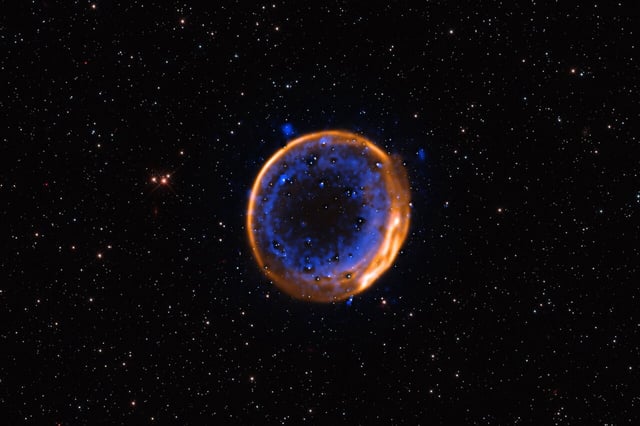Overview
- Observations with the MUSE spectrograph on ESO’s Very Large Telescope exposed two concentric shells of calcium in SNR 0509-67.5, directly confirming that the remnant underwent two separate explosive blasts.
- The concentric pattern aligns with a sub-Chandrasekhar model in which a helium layer ignites first and sends a shock inward to trigger a second detonation in the white dwarf’s core.
- SNR 0509-67.5 resides about 160,000 light-years away in the Large Magellanic Cloud’s Dorado constellation and preserves its original structure as a roughly 300-year-old remnant.
- Published July 2 in Nature Astronomy, the findings validate that sub-Chandrasekhar mass explosions occur naturally and challenge the traditional single-detonation framework for Type Ia supernovae.
- Researchers plan to apply similar spectroscopic mapping to other young supernova remnants to refine Type Ia explosions’ role as precise cosmic distance markers.
